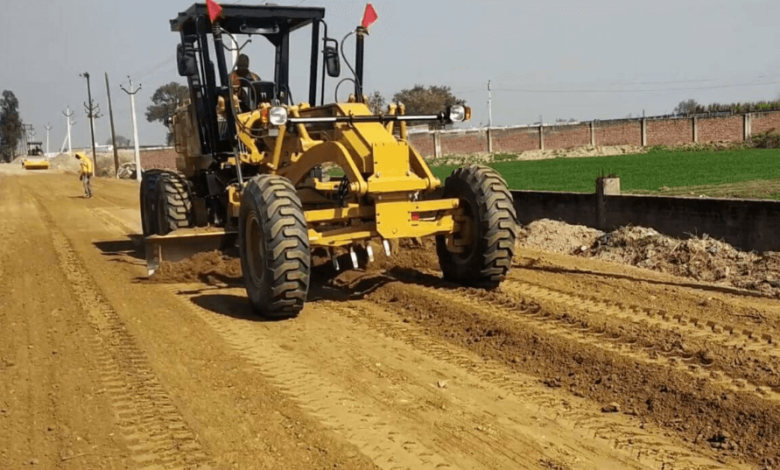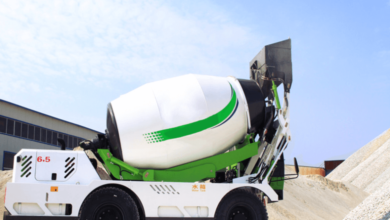Roadbase: The Backbone of Stable Construction

When it comes to construction, the visible parts of roads and buildings often get the most attention. However, what lies beneath—the foundation—plays an even more critical role in determining durability and performance. In many types of construction, especially roads, the most essential foundational layer is roadbase.
This article explores the characteristics, uses, benefits, installation, and maintenance of roadbase. Whether you’re involved in civil engineering, landscaping, or building development, understanding the role of roadbase can help you build more durable and long-lasting structures.
What Is Roadbase?
Roadbase is a compacted layer of material used to create a stable foundation under roads, pavements, driveways, and other infrastructure. It typically consists of a mixture of crushed stone, gravel, sand, and fines (very small particles) that bind together when compacted.
The material is engineered to provide excellent load-bearing capacity and good drainage, which makes it ideal for supporting everything from footpaths to highways.
Types of Roadbase Materials
Depending on the application and region, several types of roadbase may be used:
1. Natural Roadbase
Derived from naturally occurring materials like crushed limestone or granite, this type offers excellent compaction and longevity.
2. Recycled Roadbase
Made from reclaimed construction materials such as crushed concrete or asphalt. This eco-friendly option is cost-effective and diverts waste from landfills.
3. Stabilized Roadbase
This form of roadbase is blended with stabilizers like cement, lime, or bitumen to improve its strength, particularly in moisture-sensitive areas.
See also: Theonlynirith: the Persona of the Digital World
Applications of Roadbase
Although commonly associated with roads roadbase is used in various construction settings due to its versatility and structural integrity:
- Public roads and highways
- Driveways and parking lots
- Concrete slabs and building foundations
- Footpaths and cycleways
- Railway embankments and airport runways
Without a well-prepared roadbase, surfaces are more susceptible to shifting, cracking, and water damage.
Benefits of Using Roadbase
The advantages of using roadbase in construction are both structural and economic:
High Load-Bearing Capacity
Roadbase materials are designed to distribute weight evenly. This reduces pressure on the underlying soil and helps prevent failure, even under heavy traffic or loads.
Excellent Compaction
One of the primary benefits of roadbase is its ability to compact tightly, creating a strong, interlocked structure that resists movement.
Effective Drainage
Properly graded roadbase allows water to flow through or around the base layer, reducing the risk of erosion or frost damage.
Cost-Efficiency
Compared to installing deeper layers of concrete or asphalt, roadbase provides a more economical solution for preparing stable foundations.
Roadbase in Driveway Construction
One common residential use of roadbase is in gravel driveways. It’s usually installed beneath decorative gravel or pavers to create a long-lasting, rut-resistant surface.
A typical driveway might include:
- 4 to 6 inches of compacted roadbase
- A geotextile layer for additional stability
- A top layer of gravel or stone
Proper installation ensures the driveway remains even, resists water damage, and stays firm over time.
Installation Process
Installing roadbase correctly is key to achieving a strong, durable surface. The process includes several essential steps:
1. Site Preparation
Clear the construction area of debris, vegetation, and loose soil. Ensure the subgrade is leveled and compacted.
2. Base Layer Placement
Spread the roadbase material evenly over the area, usually in layers no more than 6 inches deep.
3. Compaction
Each layer should be compacted using heavy equipment like a roller or plate compactor. Multiple passes may be necessary to achieve maximum density.
4. Grading and Slope
Ensure the final surface is properly graded for water runoff. An ideal slope is about 2% away from buildings or structures.
Factors Affecting Roadbase Performance
Several variables can influence how well a roadbase performs:
- Moisture Content – Too much moisture can reduce compaction. Conversely, a slightly damp base may compact better than dry material.
- Aggregate Size – Uniform size allows tight packing, but a mix of coarse and fine particles fills gaps for stronger results.
- Material Quality – Clean, angular stones compact better than rounded or dirty materials.
- Compaction Equipment – Using the right tools for the size of the job ensures better results.
Environmental Impact
Roadbase has some notable sustainability features, especially when using recycled materials:
Recycled Aggregate
Crushed concrete and asphalt can be reused as roadbase, reducing landfill waste and minimizing the demand for natural resources.
Permeable Surfaces
In some applications, roadbase allows for water infiltration, which helps recharge groundwater and reduces surface runoff.
Maintenance and Lifespan
Once installed, roadbase typically requires little maintenance, especially if it’s used under a paved surface. However, if it serves as the top layer (e.g., in unpaved roads or driveways), some upkeep may be needed:
- Regular grading to maintain an even surface
- Replenishing material in areas where erosion or rutting occurs
- Compaction checks after heavy rain or flooding
With proper care, a roadbase foundation can last for decades without needing replacement.
Common Mistakes to Avoid
Mistakes during installation or material selection can lead to early failure. Some common issues include:
- Using the wrong type of base material
- Skipping compaction or under-compacting layers
- Ignoring proper grading for water runoff
- Laying too thick or too thin of a base layer
Consulting with engineers or site supervisors ensures that the roadbase is installed to standard specifications.
Conclusion
Roadbase is far more than a hidden layer in road construction—it’s the key to building solid, long-lasting infrastructure. Its strength, versatility, and cost-efficiency make it a vital component in countless construction projects, from residential driveways to highways.
By understanding how to select, install, and maintain roadbase properly, contractors and homeowners alike can ensure they create surfaces that stand the test of time. With options like recycled aggregates and stabilized mixes, roadbase also supports sustainable construction practices.




